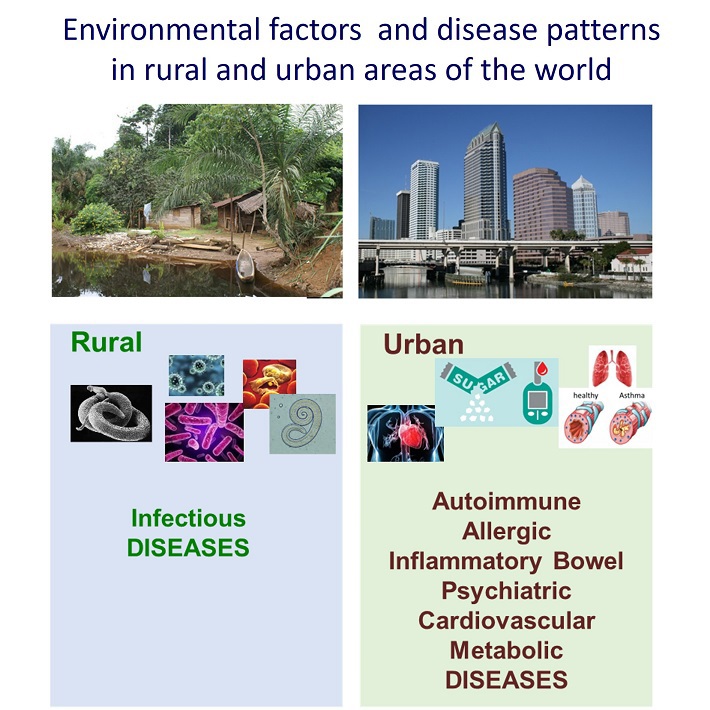Immune hypo-responsiveness Group
For example, malaria vaccine or rota virus vaccine that show good efficacy in affluent regions of the world, perform poorly in low income regions.
Through the analysis of the immune system where helminth infections and malaria are endemic, it has been possible to show how the immune system is strongly modulated by relentless challenge of the immune system by these parasites. However, it has also become clear that there are additional exposures, beyond parasites, that shape the immune system. We are taking two approaches to fully understand immune hypo-responsiveness:
…For example, malaria vaccine or rota virus vaccine that show good efficacy in affluent regions of the world, perform poorly in low income regions.
Through the analysis of the immune system where helminth infections and malaria are endemic, it has been possible to show how the immune system is strongly modulated by relentless challenge of the immune system by these parasites. However, it has also become clear that there are additional exposures, beyond parasites, that shape the immune system. We are taking two approaches to fully understand immune hypo-responsiveness:
- Which factors underlie poor immunological responses to vaccines
- What are the characteristics of the immune cells and antibodies that are responsible for vaccine hypo-responsiveness
The research is centered around the following unique approaches:
- Sustainable equal partnership with institutions in different geographical areas in the world
- Cohorts residing in different geographical areas that include rural and urban settings
- Single cell technologies that provide in depth characterization of the immunological profile and function.
- Linking unique populations with state of the art technologies to identify immunological and metabolic pathways underlying immune and vaccine hypo-responsiveness
Themes for innovation / Societal Outreach
Key publications
Our Team members
- Professor Maria Yazdanbakhsh
- Dr. Erliyani Sartono, PhD
- Dr. Mikhael Manurung, MD
- Yoanne Mouwenda
- Eunice Betouke Ongwe
- Dr. Farid Kurniawan, MD
- Dr. Dian Amaruddin, MD
- Dr. Josiane Honkpehedji, MD
- Dr. Jeremia Pyuza, MD
- Rike Sonnet
- Marloes van Dorst
- Yvonne Kruize
- Marion Konig
Collaborations at PARA:
- Professor Hermelijn Smits
- Professor Meta Roestenberg
- Professor Ron Hokke
- Dr. Simon Jochems
- Dr. Bart Everts
- Dr. Bruno Guigas
- Professor Maria Yazdanbakhsh
- Dr. Erliyani Sartono, PhD
- Dr. Mikhael Manurung, MD
- Yoanne Mouwenda
- Eunice Betouke Ongwe
- Dr. Farid Kurniawan, MD
- Dr. Dian Amaruddin, MD
- Dr. Josiane Honkpehedji, MD
- Dr. Jeremia Pyuza, MD
- Rike Sonnet
- Marloes van Dorst
- Yvonne Kruize
- Marion Konig
Collaborations at PARA:
- Professor Hermelijn Smits
- Professor Meta Roestenberg
- Professor Ron Hokke
- Dr. Simon Jochems
- Dr. Bart Everts
- Dr. Bruno Guigas
Collaborations outside PARA:
- Ahmed Mahfouz
- International collaborations:
- Professor Tanawati Supali (UI, Indonesia)
- Professor Akim Adegnika (CERMEL, Gabon)
- Professor Alison Elliott (UVRI, Uganda)
- Professor Jennifer Downs (Tanzania)
- Professor Sitti Wahyuni (UNHAS, Indonesia)
&width=710)